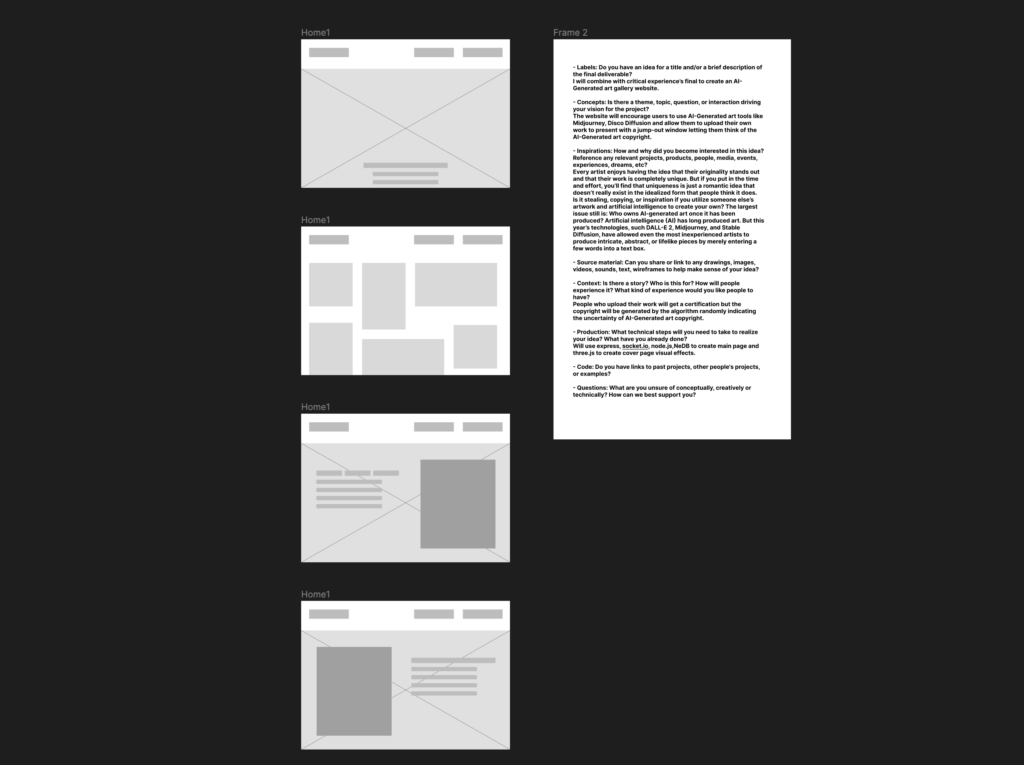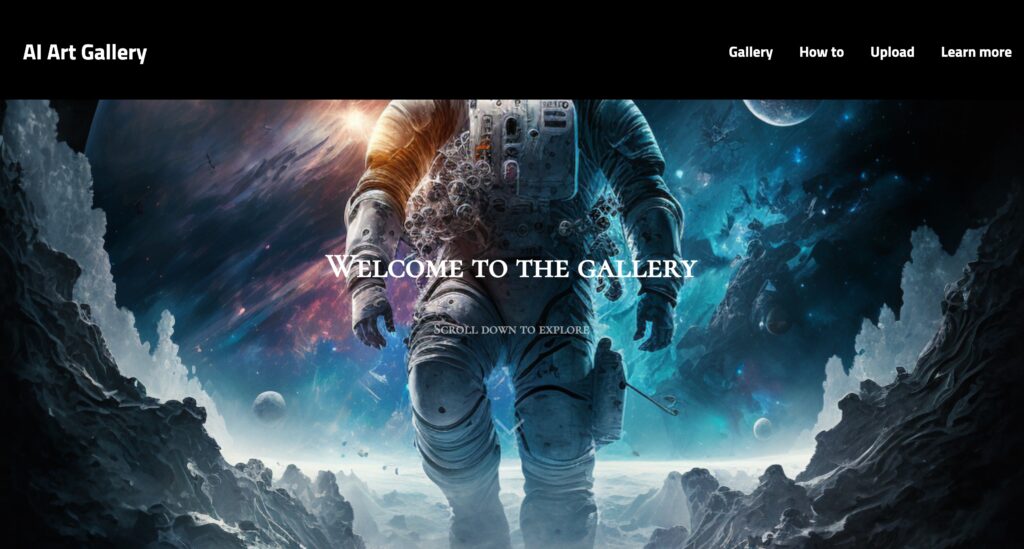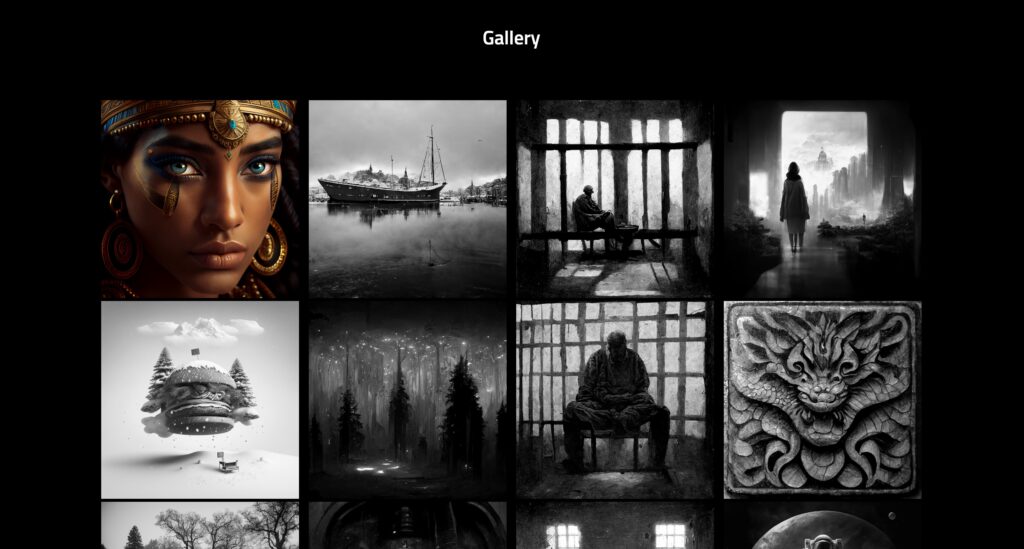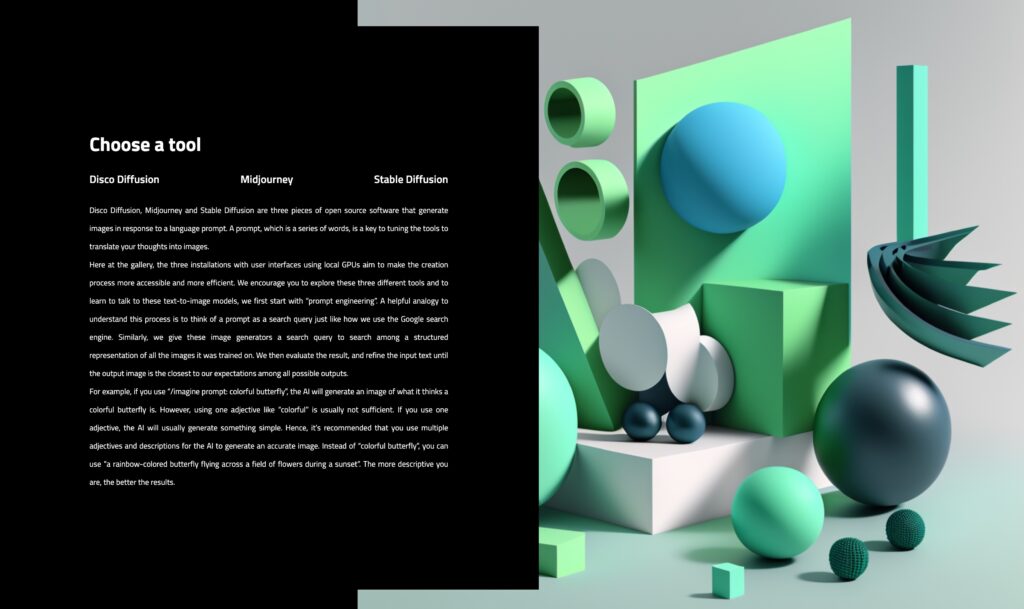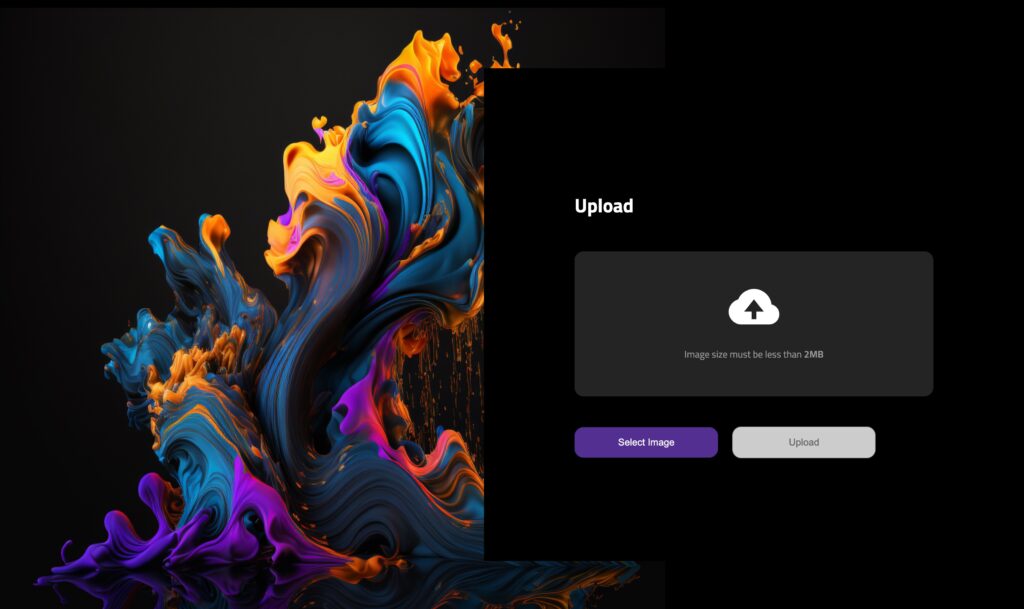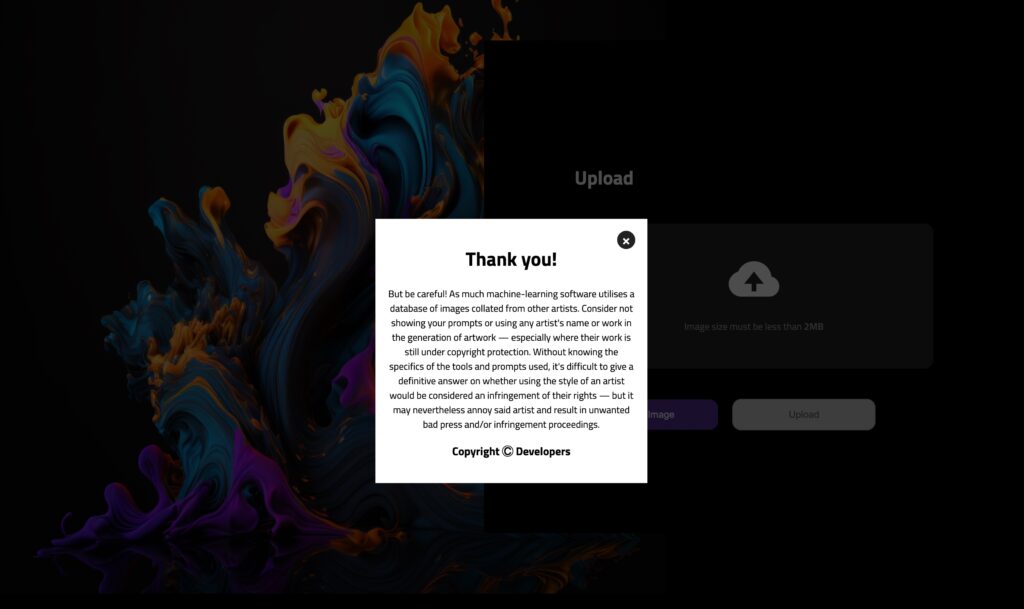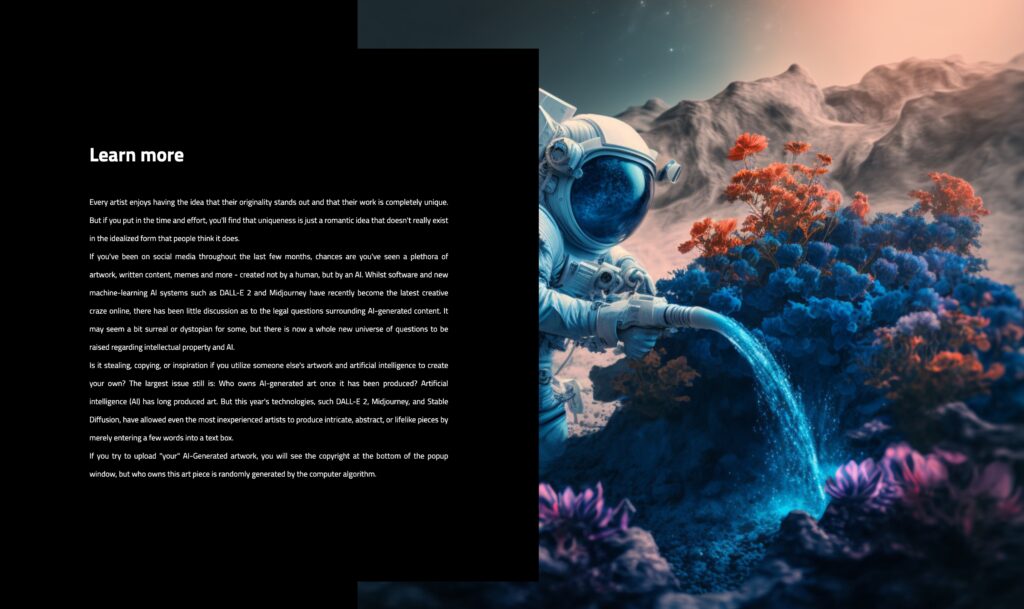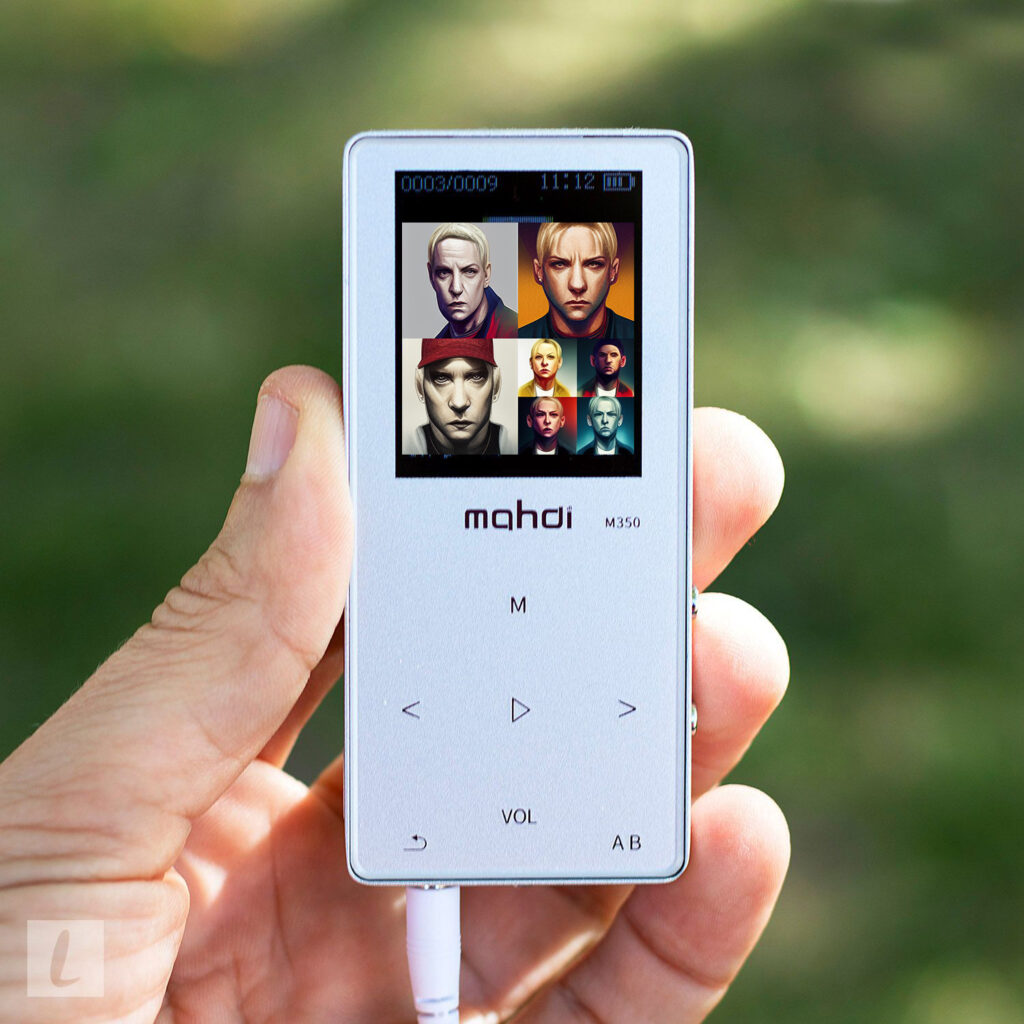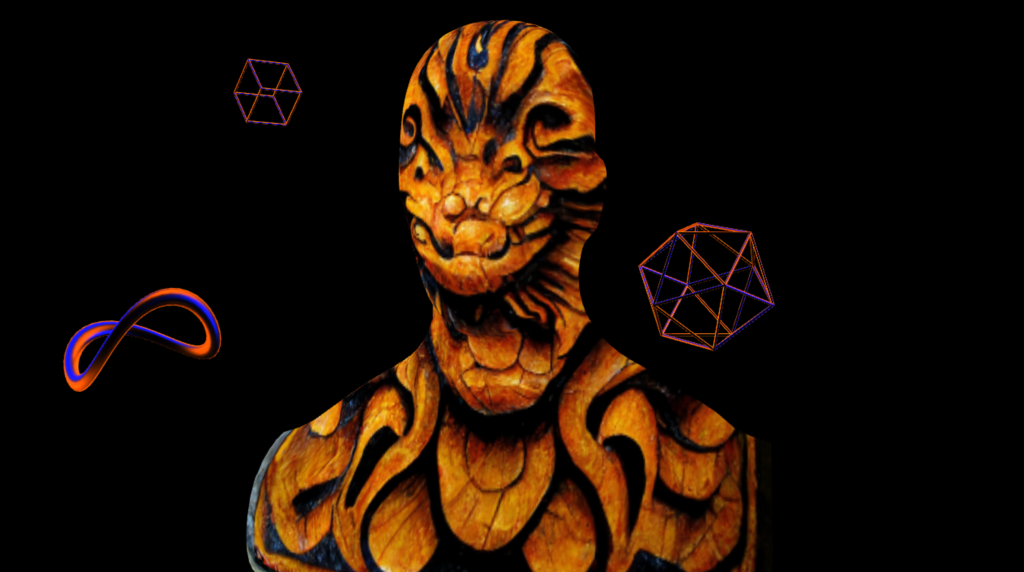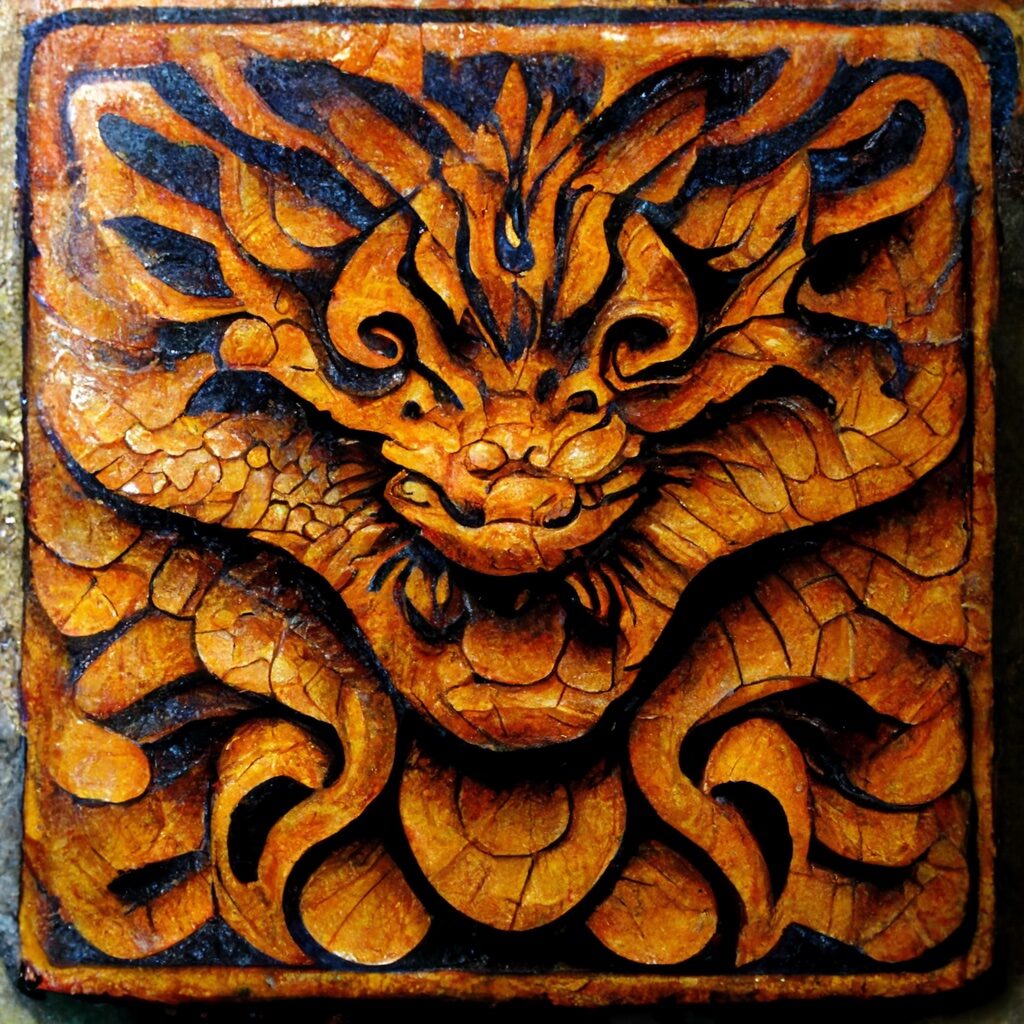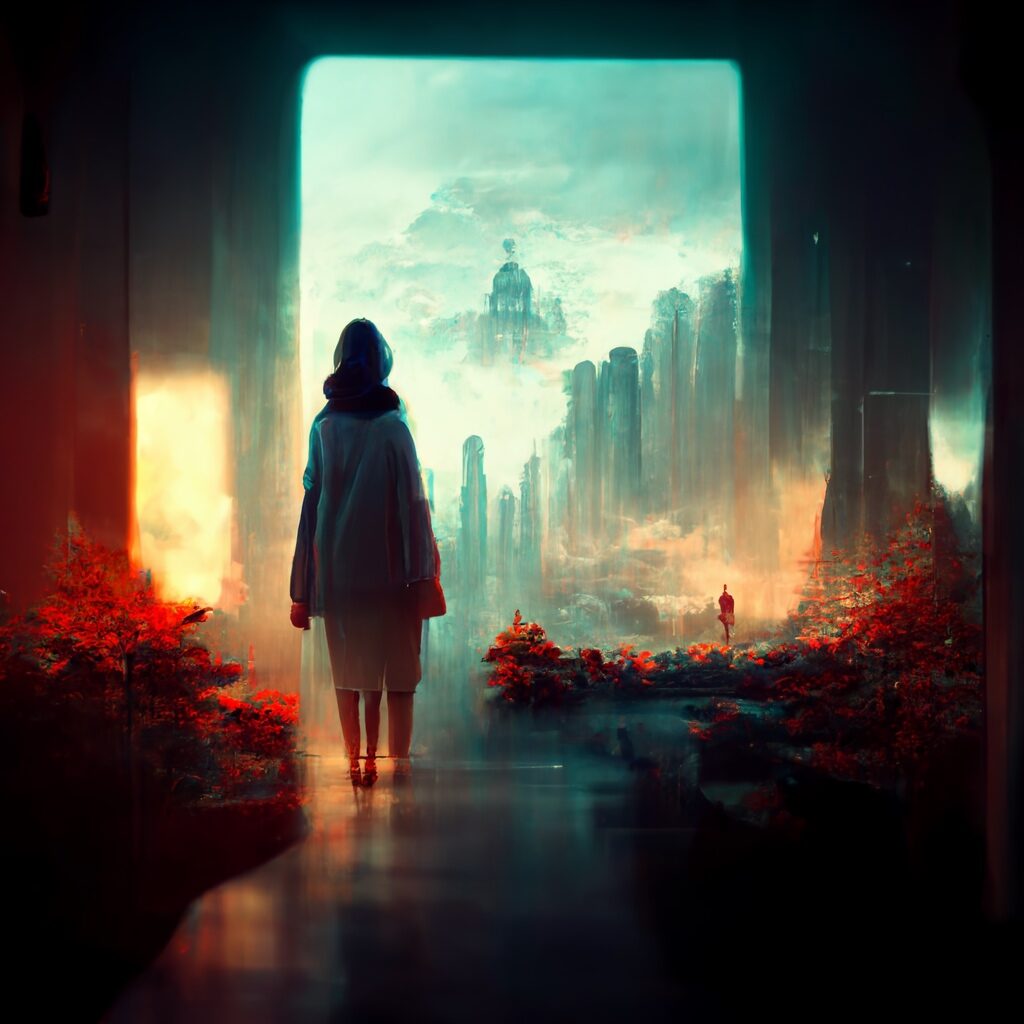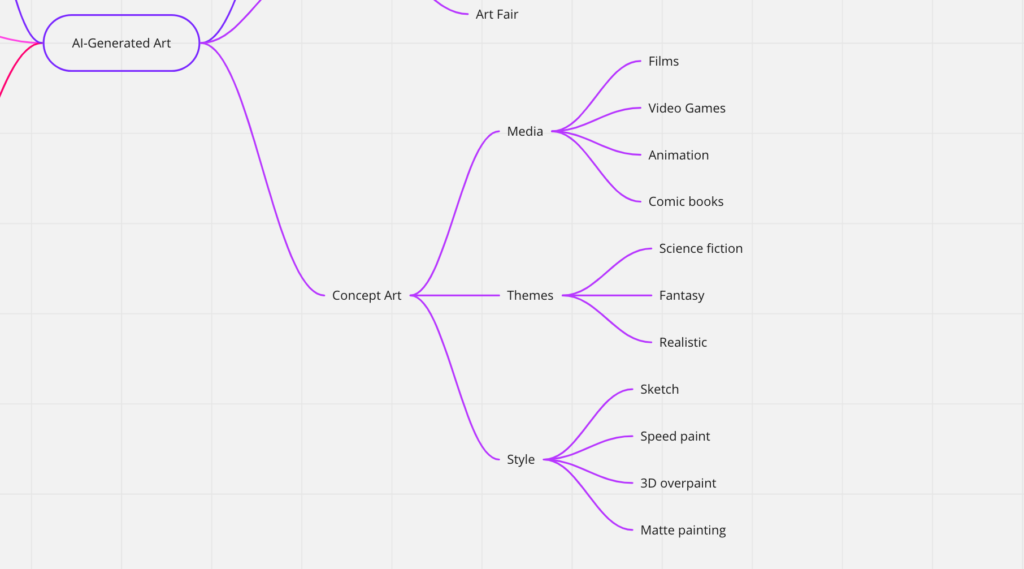Topic 2 Final Reflection
- What did you learn?
Disco Diffusion, Midjourney and Stable Diffusion are three pieces of open source software that generate images in response to a language prompt. A prompt, which is a series of words, is a key to tuning the tools to translate your thoughts into images.Here at the gallery, the three installations with user interfaces using local GPUs aim to make the creation process more accessible and more efficient. We encourage you to explore these three different tools and to learn to talk to these text-to-image models, we first start with “prompt engineering”. A helpful analogy to understand this process is to think of a prompt as a search query just like how we use the Google search engine. Similarly, we give these image generators a search query to search among a structured representation of all the images it was trained on. We then evaluate the result, and refine the input text until the output image is the closest to our expectations among all possible outputs.
For example, if you use “/imagine prompt: colorful butterfly”, the AI will generate an image of what it thinks a colorful butterfly is. However, using one adjective like “colorful” is usually not sufficient. If you use one adjective, the AI will usually generate something simple. Hence, it’s recommended that you use multiple adjectives and descriptions for the AI to generate an accurate image. Instead of “colorful butterfly”, you can use “a rainbow-colored butterfly flying across a field of flowers during a sunset”. The more descriptive you are, the better the results.
Also, the copyright of who owns the AI-Generated art still need to be discussed, So once you’ve created your AI-generated masterpiece, what’s stopping you from claiming it as your own, using it commercially or preventing others from using it? On top of existentially threatening the very concept of artists and creatives, Ryan says that AI-generated content raises many new legal issues.
- What feedback did you receive? Any reflections on critique itself?
The topic doesn’t have a certain answer, people would love to see the debate between humans and AI. I also received feedback on my website, which can provide a better user experience and make the copyright problem prominent. - What might you do differently in terms of process or content?
I might create an interactive artwork using different kinds of digital software and AI-Generated art platforms instead of creating a website. - What was inspiring? What parts?
Trying to use different creative tools is inspiring, I can experience the differences between these popular AI-Generated Art platforms such as Disco Diffusion, Midjourney and Stable Diffusion, and also I have learned a lot about the training data, data biases, terms of use, policy, rules, and even The US Copyright Office. - Revisit the assignment prompts: how did your project relate to the original prompts, in terms of critical lens, audience, tone, etc…
Because my audiences are those people who haven’t used AI-generated art before, which may have some contradiction that if someone hasn’t used it so far, they probably don’t have an interest to use these kinds of tools, so my project may not drive people’s awareness to fulfill my goal. - How did you balance research and experimentation? Which is easier for you? How can you focus more on the areas that you shy away from
I do like the daily practice part, which forced me to dig deeper every day, and also because of that I can narrow down my topic and find my critical lens.


